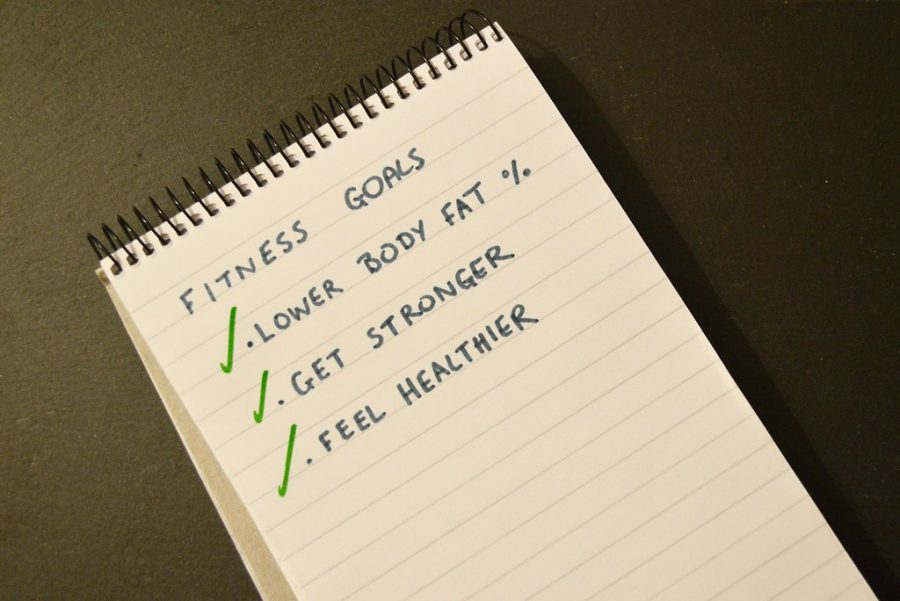Living Fit: How to set realistic fitness goals
Setting attainable fitness goals like the ones pictured above is key to sticking with your workout routine. It is important to choose goals that are realistic for you so that you can stick with them in the long run.
May 10, 2020
Being in quarantine and having lots of extra time on our hands has resulted in many people working out more frequently, especially if they did not already have a routine in place. However, what will happen when quarantine ends? Of course, you hope that you will continue to stick to your current fitness regime; however, if you do not set goals that are realistic and attainable in and out of quarantine, you may find it difficult to do so. There are a few ways to go about setting the right goals so that you are able to keep up with them long-term.
It is first important to acknowledge that your only incentive for exercising should not be to achieve a particular physique. Your goals should entail feeling happier, stronger, and healthier. Take it from senior Hannah Stroup, who said, “If you’ve wanted to get in better shape but didn’t feel like you had the time, you have plenty of it now. But also know that any pressure you’re feeling about getting into better shape is malarkey. Being active is great, and all people should be more active regularly, but the stress to look or be a certain way should not be your sole motivator! Be active for you, and do physical activities that you like!” If you do not enjoy traditional at-home workouts, such as yoga, pilates, and online routines, one of your fitness goals can be to try something new. Hannah recommends getting outside: “Bike, walk, hike a trail (there are trails all over Raleigh), kick around a soccer ball, throw a baseball with a parent or sibling, or play tennis.”
It can also help to take a look at the things you have scheduled for the week ahead in order to plan your workouts around them. You may even want to write down a daily schedule, including the time you set for exercising, as this may make you feel more obligated to do it. If you decide to create a schedule, be sure to prepare and make time for recovery from soreness and muscle tension. This might mean including one rest day each week, or maybe you would rather just plan to participate in specific self-care practices, like taking warm baths with Epsom salt to loosen your muscles after more difficult workouts. Either way, make sure you are taking care of your body so that you do not feel discouraged or burnt out on the days that you wake up feeling a bit sorer than usual.
In addition, try to make some of your goals timed. Setting a specific day, week, or even month by which you would like to achieve a particular goal will help you feel more motivated to work towards it because the results are in sight.
All things considered, set goals that you know you can achieve, and exercising will be more rewarding for you. Good luck, and have fun working out!












